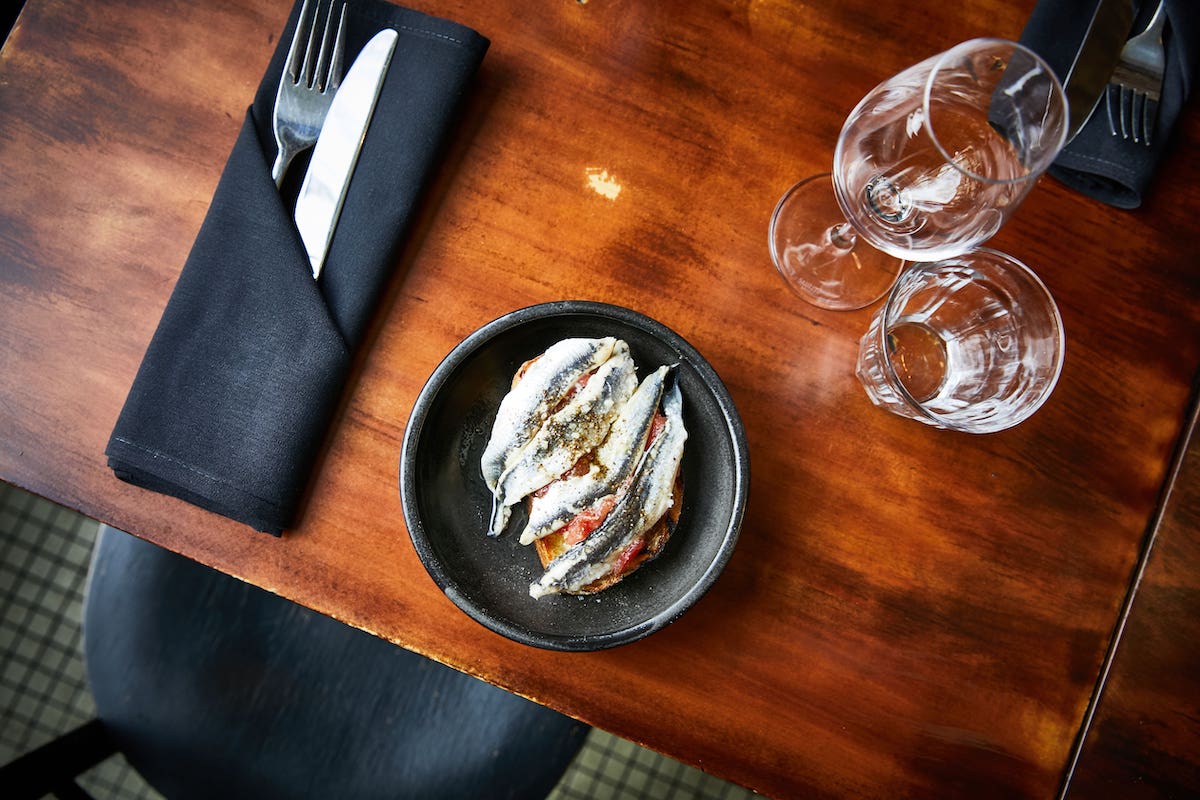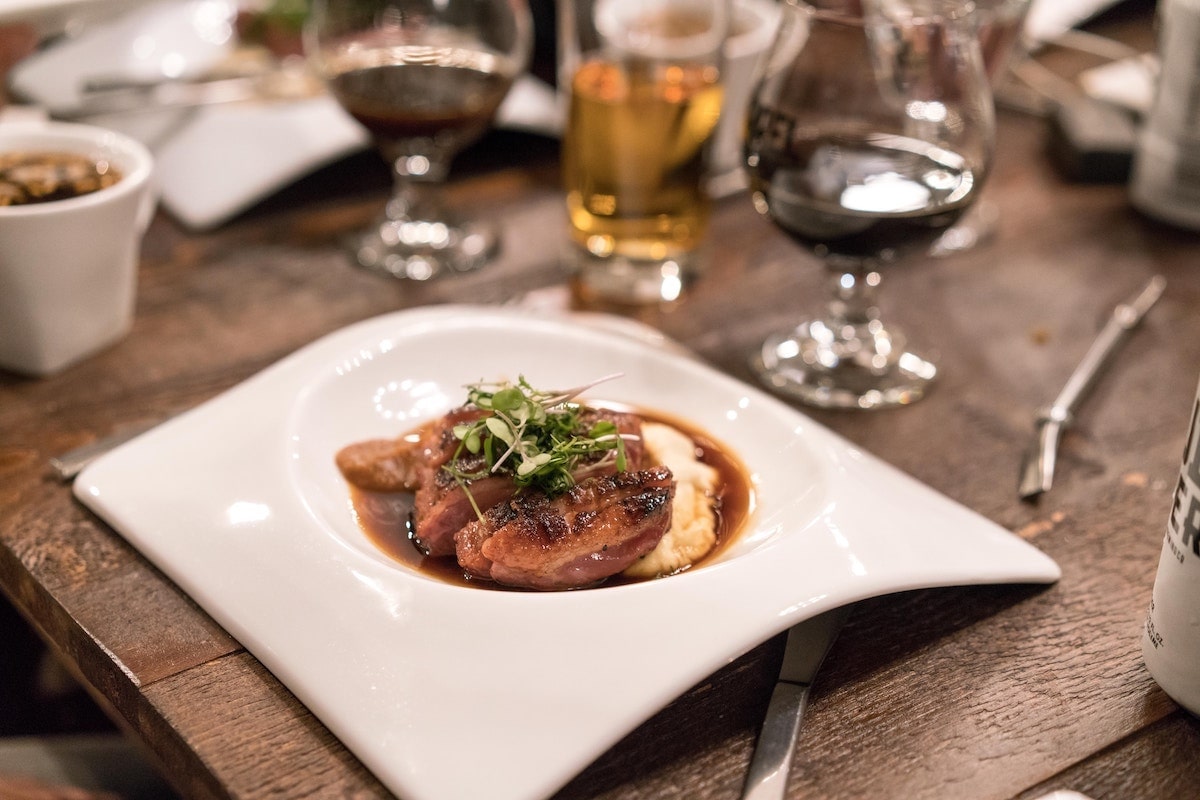
3 Easy Tips for a Cleaner Meal Presentation by W.D Colledge
The ingredients to your most popular dish all work together to create a memorable experience. When one of the ingredients is missing, people take notice.
From the completion of a meal to the next serving, there is a process behind the scenes that guests don't normally see.
1. Create height on the plate
Daniel England, corporate chef with San Diego’s OMG Hospitality Group, likes to create height as he plates food.

“It’s important that you don’t separate the food trying to fill the plate—build from the bottom up,” he says. “If you could use a little structure, you can always purchase a ring mold to start with a base. Simply pack some food in the mold and gently lift it up. Now you have a base to build on.”
2. Cut meat horizontally
England also recommends “fanning” or shingling out slices of meat to show off its quality.

“Slice your meats on a 45-degree bias, and also slice against the grain of the meat for a more tender cut,” he says. “Show off that perfect medium-rare steak!”
3. Play with textures
Joyce Tang, chief baking officer at Oakland, California’s La Chinoserie, suggests playing with textures, foams, and sauces to make the dish look more interesting.

“I like to play up contrasting textures on my plate,” she adds. “Foams are usually really helpful in plating and can be really easily done, playing around with different sauces and textures.”
4. Use contrasting colors
Tang also stresses the importance of playing with contrasting colors. She avoids artificial colors and uses matcha, powdered sugar, or natural colors to catch the eye instead.
“The way you present your food is hyper-important” she adds. “The more time you spend on how you present each dish, the more visual interest you can stimulate in folks.”
Tanner Agar, owner and chief experience officer at Rye Restaurant in McKinney, Texas, echos that sentiment.

Agar recommends using bold colors to create appealing visuals. “The easiest way to add color is to start working with more colorful ingredients. Items like carrots, potatoes, cauliflower, lettuces, beans, and more come in a variety of gorgeous colors,” he says. “The difference a purple cauliflower puree makes on a plate is striking.”
5. Match food presentation to your restaurant theme
Jim Solomon, chef and former owner of The Fireplace in Brookline, Massachusetts, says that the style of plating should match the restaurant’s atmosphere.

“Small ethnic restaurants, where it appears grandma is cooking in the kitchen, can’t serve plates that try to emphasize vertical, architectural compositions,” he says.
“Your guests expect a simple, welcoming presentation that stresses straightforward flavor cooked with heart and served with an unfussy, rustic quality. At relatively pricey, hip and high-end restaurants, guests want to see a degree of artistry and care taken in constructing the dishes.”
The way you plate your food should directly reflect your restaurant type.
Solomon adds that “food should have an element of height or visual texture, the balance of color and thoughtful garnishes—both carefully placed and intentional in flavor and texture.”
6. Choose the right plates
Michael Welch, the executive chef at Backyard Kitchen & Tap in Pacific Beach, California, preaches using the right plate size, color, and style. The color of plate matters as the plate serves as the canvas for your food.
“Typically, chefs will stay away from blue plates as there isn’t any naturally blue food and it is thought to be an unappetizing color,” he says. “If you have something with a lot of vibrant color, it might stand out better on a white plate.”

Jim Solomon echos the importance of choosing the right vessel to present your dish. “Choose a dish vessel that makes it easy for your guest to eat. This is also an opportunity for your chefs to show their personality in the dishes they create.”
7. Serve smaller portion sizes
Smaller portion sizes were named by the National Restaurant Association as one of the top five hottest restaurant concepts for 2019.
Of course, you still want to serve enough food to satisfy your guests and portion sizes can vary depending on the type of establishment you’re operating, but smaller portions are typically easier to style.
Stick to no more than six elements on each dish to prevent them from looking overcrowded.

Related read:8 Benefits to Serving Smaller Portion Sizes
8. Use edible garnishes and decorations
Garnishes and decorations are a great way of styling your dish, but there are some guidelines you should follow when using them.

Whatever you use—whether it’s a herb, spice, or a flower—it needs to be edible. Everything on your plate should be placed with the intention of elevating the dishes taste first, and the way it looks second.
9. When in doubt, keep it simple
Michael Welch also emphasizes the value of simplicity.
“Overcrowding the plate with unnecessary oils or spices or microgreens just takes away from the food you worked so hard to make,” he explains. “Subtraction is your best ingredient.”
Rather than piling on a zillion garnishes or swirls of sauce, let the quality of the cooking speak for itself.
“A properly seared steak with some fresh watercress and perfectly roasted baby potatoes will look better than the fanciest of plates with subpar cookery,” Welch says. “Proper cooking will give you a lot of contrast within your ingredients with both texture and color.”
10. Express yourself
There’s an art in plating food; it’s where chefs can allow themselves to be creative and have a high impact on how guests perceive the dishes they’re eating.
Chef Brian Poe of Bukowski Tavern in Cambridge, and Parish Café and Tip Tap Room in Boston, believes that chefs should approach food plating and presentation just as an artist would approach their next piece.
“Presentation should be approached just like art, cooking, and music,” says Poe. “Take a moment to relax and look at what the others are doing, learn a bit of the technique and then find your own voice and style.”

One of Poe’s favorite approaches is to go “Jackson Pollock,” holding out the plate like a canvas and splattering it with sauce. “Other times we might look toward a more linear approach with could either be Picasso or street graffiti style,” he adds. “Other times the negative space technique might work.”




 1.800.265.2961
1.800.265.2961


Leave a comment